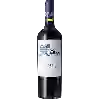
Winery Vignerons de Tautavel VingrauMuscat de Rivesaltes
This wine generally goes well with spicy food and sweet desserts.
Food and wine pairings with Muscat de Rivesaltes
Pairings that work perfectly with Muscat de Rivesaltes
Original food and wine pairings with Muscat de Rivesaltes
The Muscat de Rivesaltes of Winery Vignerons de Tautavel Vingrau matches generally quite well with dishes of spicy food or sweet desserts such as recipes of turkey paupiettes in poultry sauce or grandma's cherry clafoutis.
Details and technical informations about Winery Vignerons de Tautavel Vingrau's Muscat de Rivesaltes.
Discover the grape variety: Datal
Intraspecific crossing obtained in 1956 between the Beirut date palm and the Alexandria muscatel. This variety is not widely cultivated in France, although it is registered in the Official Catalogue of table grape varieties, list A1. It can be found in South Africa, Portugal, etc.
Informations about the Winery Vignerons de Tautavel Vingrau
The Winery Vignerons de Tautavel Vingrau is one of of the world's great estates. It offers 34 wines for sale in the of Muscat de Rivesaltes to come and discover on site or to buy online.
The wine region of Muscat de Rivesaltes
The wine region of Muscat de Rivesaltes is located in the region of Rivesaltes of Languedoc-Roussillon of France. Wineries and vineyards like the Domaine Boudau or the Domaine Lafage produce mainly wines natural sweet, sweet and white. The most planted grape varieties in the region of Muscat de Rivesaltes are Melon et Muscadelle, they are then used in wines in blends or as a single variety. On the nose of Muscat de Rivesaltes often reveals types of flavors of earth, spices or melon and sometimes also flavors of mango, dried apricot or non oak.
The wine region of Languedoc-Roussillon
Languedoc (formerly Coteaux du Languedoc) is a key appellation used in the Languedoc-Roussillon wine region of southern France. It covers Dry table wines of all three colors (red, white and rosé) from the entire region, but leaves Sweet and Sparkling wines to other more specialized appellations. About 75% of all Languedoc wines are red, with the remaining 25% split roughly down the middle between whites and rosés. The appellation covers most of the Languedoc region and almost a third of all the vineyards in France.
The word of the wine: Côte des Blancs
One of the most famous terroirs of the Champagne region, from Épernay to Vertus, mainly devoted to Chardonnay, hence its name. The villages of Chouilly, Cramant, Cuis, Mesnil-sur-Oger, Avize, etc., lying on the chalk, are in a way to Champagne what Meursault, Chablis and Puligny are to Burgundy.














